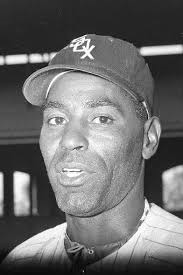In
celebration of Black History Month, here is Today’s Negro League Baseball
History Fact: Frank Duncan
Frank
Duncan spent 20 of his 28 years (1920 – 1948) in Negro League baseball with his
hometown Kansas City Monarchs. Born
February 14, 1901 in Kansas City, Missouri, he played on both Monarch teams
that were Negro League World Series Champions; although almost two decades
apart.
Known
mostly for his defense as a catcher, Duncan’s strong throwing arm helped
Monarch pitchers hold opposing base runners close to first or second base. A smart catcher, he worked with Hall of Fame
pitchers Jose Mendez, Bullet Rogan, Satchel Paige, and Hilton Smith during his
years with the Kansas City team.
He
first played with the Monarchs from 1921 -1934.
During that time the team won four Negro National League (NNL) pennants
(1923 – 1925, 1929). They defeated the
Hilldale Club of Darby, Pennsylvania in the first Negro League World Series
(1924). Duncan got the key hit to drive
in two runs and help the Monarchs win Game Seven of the best five out of nine
series.
Although
the Monarchs continued to operate when the NNL went out of business after the
1931 season, Duncan left to play for teams in New York and Pittsburgh. He returned to the Monarchs in 1937, the
first year of the Negro American League (NAL).
The next season he played with the Chicago American Giants, but returned
to the Monarch’s in 1940 and became the team’s player/manager.
In
1942, the Monarchs won the NAL pennant and defeated the Homestead Grays in the
Negro League World Series; the team’s second World Series championship. Duncan led the team to another NAL pennant in
1946, but it lost a closely contested Negro League World Series to the Newark
Eagles.
Duncan
and his son Frank, a pitcher, were the first Negro League father-son battery in
1941.
Negro
League baseball is not just a part of African American history, but it is woven
into the fabric of 20th Century American history.
To
read about the Negro League baseball era Last Train To Cooperstown














